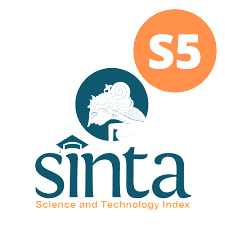PERUBAHAN PERILAKU EMOSIONAL ANAK KELAS V TERHADAP FILM SERIAL ANIMASI TSUBASA
DOI:
https://doi.org/10.33061/js.v1i1.2296Keywords:
Television, Tsubasa Animation Series, Emotional ChangesAbstract
The purpose of this study is to know the existence of changes in the emotional behavior of students toward the Tsubasa animated serial film. The approach used in this study is a qualitative research approach. In principle, this qualitative research is a procedure to result a number of descriptions of what is written and what is spoken by people who become the target of research and descriptions of their behavior which can be observed. Qualitative research is neither aiming at measuring nor using procedures in explaining the results of research. This approach is used to explain and describe the focus of research, which is about changes in emotional behavior of fifth grade students to the Tsubasa animated serial film. The appearance of emotional changes of the students out of 38 students in this study as many 21 children experienced high emotional changes, while 17 children experienced moderate emotions.
References
Myers, David G. 2013. Psikologi Sosial. Jakarta: Salemba Humanika.
Moleong, Lexy J. 201). Metode Penelitian Kualitatif. Bandung PT Remaja Rosdakarya.
________________.2014.Metode Penelitian Kualitatif. Bandung PT Remaja Rosdakarya.
Santrock, John W. 2007. Perkembangan Anak (Edisi kesebelas). Jakarta: PT. Gelora Aksara Pratama
______________________.2011.Masa Perkembangan Anak. Jakarta: Salemba Humanika.
Sugiyono. 2016. Metode Penelitian Kombinasi (Mixed Methods). Bandung : Alfabeta
____________. (2017). Memahami Penelitian Kualitataif. Bandung. Alfabeta
Downloads
Published
Issue
Section
License
Authors who publish this journal agree to the following terms:
- Authors retain copyright and grant the journal right of first publication with the work simultaneously licensed under a Creative Commons Attribution License that allows others to share the work with an acknowledgement of the work's authorship and initial publication in this journal.
- Authors can separately make additional contractual arrangements for non-exclusive distribution published by the journal (e.g., publish it in a book), with an acknowledgement of its initial publication in this journal.
- Authors are allowed and encouraged to send their work via online (e.g., in the institutional repositories or their website) after published by the journal.














